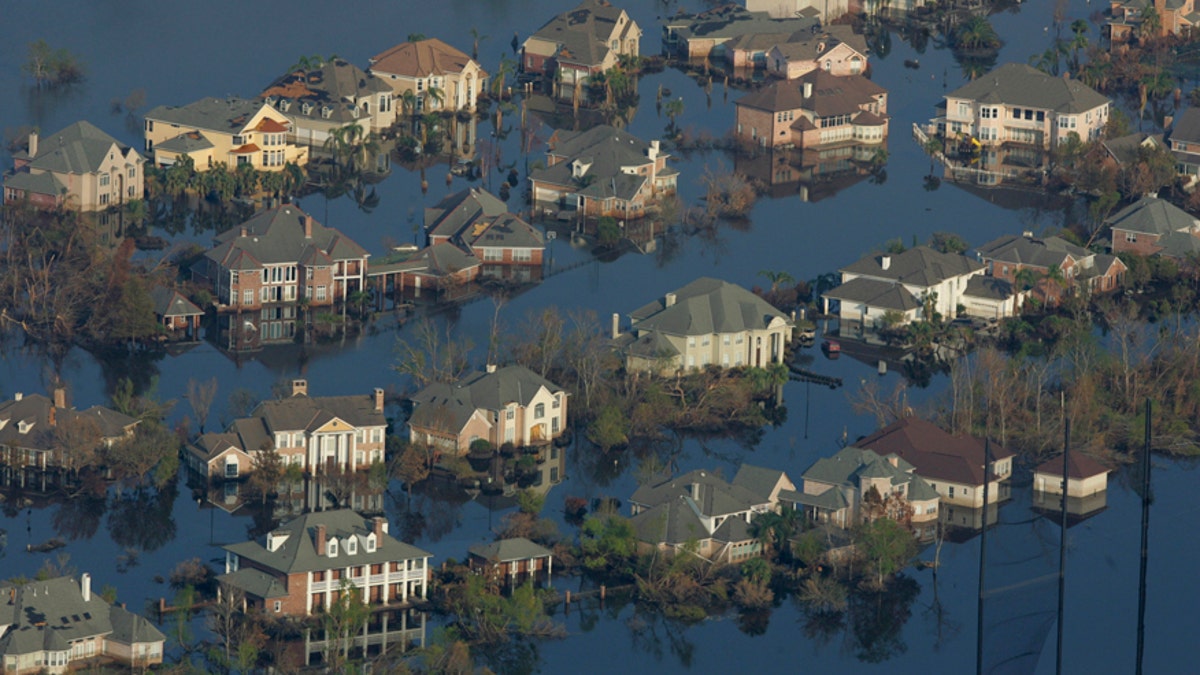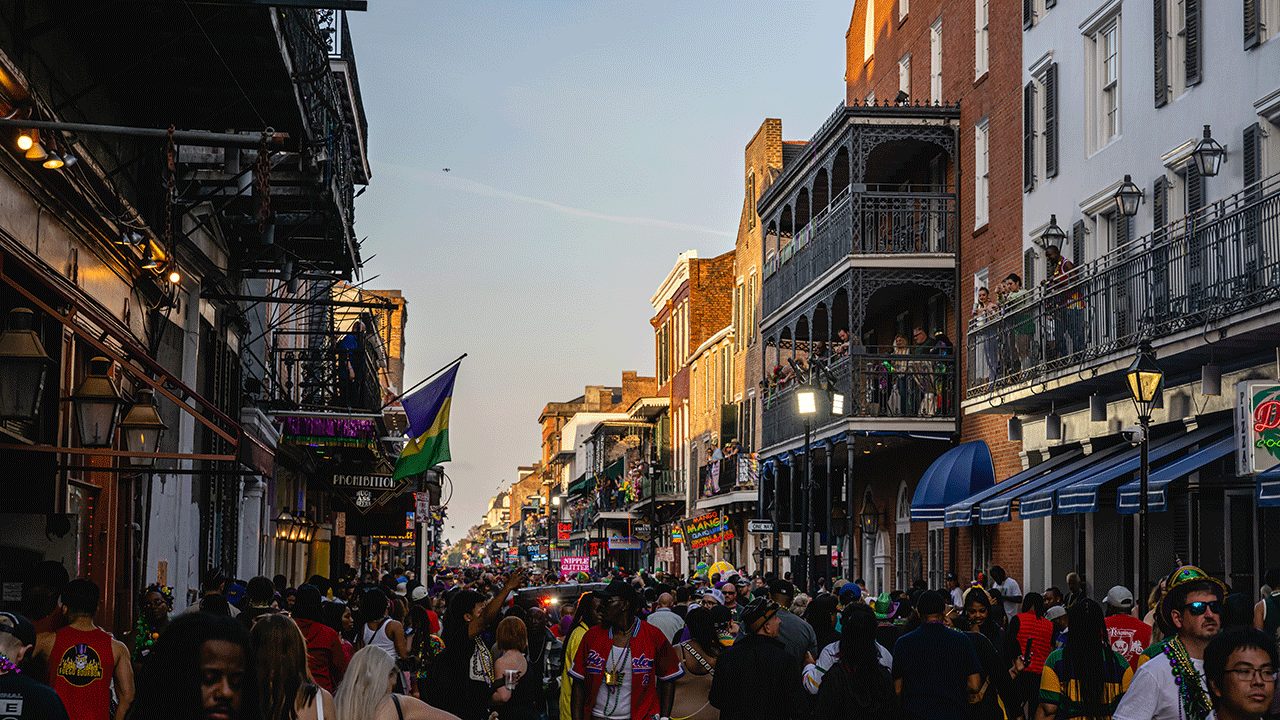Karl Rove on lessons learned from Hurricane Katrina
Former deputy chief of staff during the George W. Bush administration Karl Rove breaks down how the states and federal government coordinate to handle natural disasters.
On this day in history, Aug. 29, 2005, Hurricane Katrina made landfall near New Orleans, Louisiana — causing massive destruction.
Katrina made landfall along the Gulf Coast early that morning as a large Category 3 hurricane, according to multiple sources.
Sustained winds were around 145 mph in southeast Louisiana.
Katrina continued northward, affecting areas near New Orleans to areas near Mobile, Alabama.
ON THIS DAY IN HISTORY, AUGUST 28, 1996, PRINCE CHARLES AND PRINCESS DIANA OFFICIALLY DIVORCE
Devastating damage occurred along the Gulf Coast.
Katrina will most likely go down as one of the worst natural disasters in United States history, the National Weather Service said.
Katrina was the third most powerful storm of the 2005 Atlantic hurricane season, said History.com.

Neighborhoods are shown flooded with oil and water two weeks after Hurricane Katrina went through New Orleans. This image was taken on Sept. 12, 2005. (REUTERS/Carlos Barria)
"In the wake of the storm, there were over 50 failures of the levees and flood walls around New Orleans and its suburbs. The levee and flood wall failures caused widespread flooding," the same source recounted.
After briefly coming ashore in southern Florida on August 25 as a Category 1 hurricane, Katrina gained strength before slamming into the Gulf Coast on August 29.
About 80% of the city's population evacuated, while 10,000 people headed to the Superdome for shelter.
Because of the threat of Hurricane Katrina at the time, Mayor Ray Nagin issued a mandatory evacuation for the city of New Orleans.
About 80% of the city's population evacuated, while 10,000 people headed to the Superdome for shelter, said NewOrleans.com.
ON THIS DAY IN HISTORY, JAN. 28, 1986, SPACE SHUTTLE CHALLENGER EXPLODES, SHOCKING THE NATION
Others opted to stay in their homes at their own risk.
Katrina hit on August 29 and breached the 17th Street Canal levee, causing floodwater to run through many New Orleans neighborhoods, said PBS.
The failure of other levees would leave about 80% of the city submerged.

Bourbon Street in New Orleans famed French Quarter neighborhood. Floodwater ran through many New Orleans neighborhoods in 2005 as a result of Hurricane Katrina. (Jon Cherry/Getty Images)
Despite the evacuation order, people remained in the metropolitan area, and those citizens — thousands of them — took shelter in the New Orleans Superdome but were stranded there for days without adequate food or hygiene," the same source reported.
Meanwhile, reports emerged of looting and other crimes as well as residents awaiting rescue from their flooded homes.
This led to complaints about the response of emergency management officials to the disaster, according to PBS.
ON THIS DAY IN HISTORY, SEPT. 1, 1864, ATLANTA COLLAPSES AND BURNS AS CONFEDERATES FLEE
The areas with the most flooding included the Ninth Ward, Lakeview and St. Bernard Parish, although there was some degree of flooding in almost every neighborhood, noted NewOrleans.com.
Helicopters were used to rescue many people from rooftops in the flooded Ninth Ward.
Many local agencies were unable to respond to the increasingly desperate situation, as their own headquarters and control centers were under 20 feet of water, said Britannica.com.
In the absence of organized effort, helicopters were used to rescue many people from rooftops in the flooded Ninth Ward, the same source recounted.

A neighborhood in the Seventh Ward is shown with severe flooding from Hurricane Katrina on Sept. 11, 2005 in New Orleans. (Lindsay Brice/Getty Images)
The aftermath of Katrina came with controversy.
"The federal government stalled with assistance for days — being unclear of how bad the damage was and how many people needed help," stated NewOrleans.com.
On August 31, the first wave of evacuees arrived at the Red Cross shelter at the Houston Astrodome, about 350 miles away from New Orleans; but tens of thousands remained in the city, multiple sources said.
Shortages of food and potable water quickly became an issue.
By September 1, an estimated 30,000 people were seeking shelter under the damaged roof of the Louisiana Superdome, and an additional 25,000 people had gathered at the convention center, indicated Britannica.com.
Shortages of food and potable water quickly became an issue, and daily temperatures reached 90 degrees.
It was not until September 2 that an effective military presence was established in the city and National Guard troops mobilized to distribute food and water, according to Britannica.com.

Neighborhoods in New Orleans, shown here on Aug. 30, 2005, were completely flooded in the aftermath of Hurricane Katrina. Louisiana Gov. Kathleen Blanco ordered a full-scale evacuation after levees weakened by the storm gave way and the waters of Lake Pontchartrain flooded the city. (Michael Appleton/NY Daily News Archive via Getty Images)
The evacuation of hurricane victims continued, and crews began to rebuild the breached levees.
On September 6, local police estimated there were fewer than 10,000 residents left in New Orleans, the same source indicated.
The U.S. Army Corps of Engineers pumped the last of the floodwaters out of the city on Oct. 11, 2005, some 43 days after Katrina made landfall.
Dozens of countries contributed funds and supplies; and Canada and Mexico deployed troops to the Gulf Coast to assist with the cleanup and rebuilding, according to multiple sources.
The U.S. Army Corps of Engineers pumped the last of the floodwaters out of the city on Oct. 11, 2005, some 43 days after Katrina made landfall, according to PBS.
For more Lifestyle articles, visit www.foxnews.com/lifestyle
Katrina’s death toll is the fourth highest of any hurricane in U.S. history — after the Galveston Hurricane of 1900, which killed between 8,000 and 12,000 people; Hurricane Maria, which killed over 4,600 people in Puerto Rico in 2017; and the Okeechobee Hurricane, which hit Florida in 1928 and killed as many as 3,000, according to History.com.
CLICK HERE TO SIGN UP FOR OUR LIFESTYLE NEWSLETTER
In Louisiana, in excess of 2,000 people are believed to have died due to Katrina’s impact. The major causes of death were drowning (40%), injury and trauma (25%), and heart conditions (11%), according to a report published in 2008 by the American Medical Association.
CLICK HERE TO GET THE FOX NEWS APP
In addition, Katrina caused more than $160 billion in damage.
The population of New Orleans fell by 29% between the fall of 2005 and 2011, multiple sources reported.





















